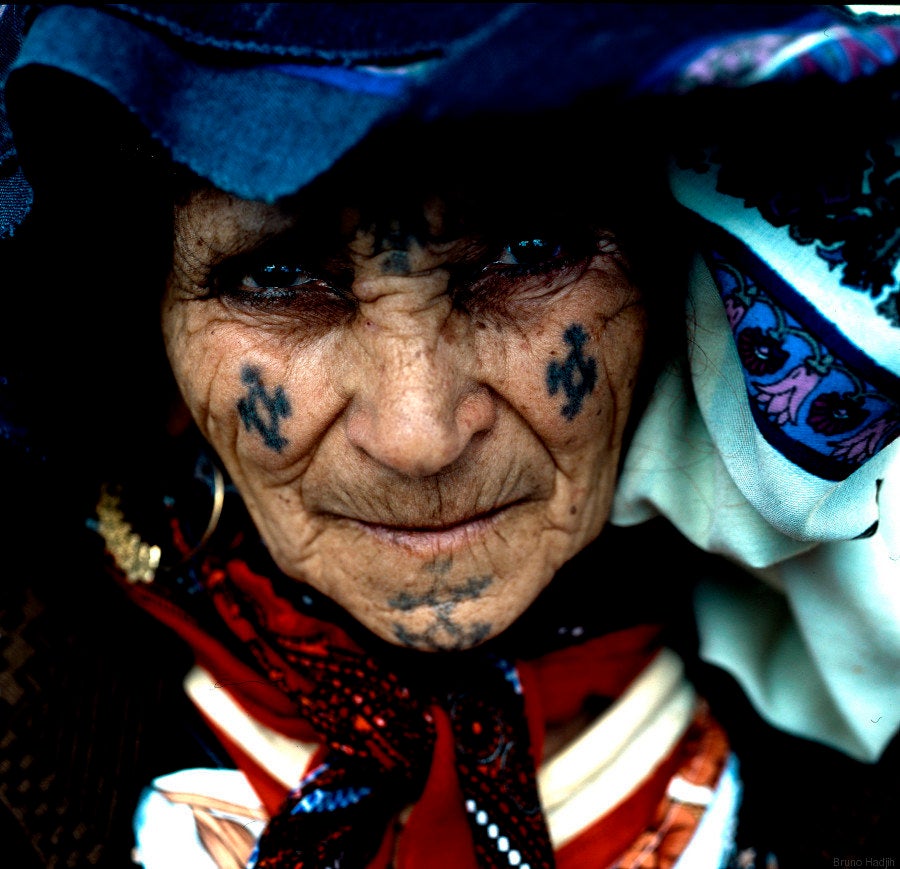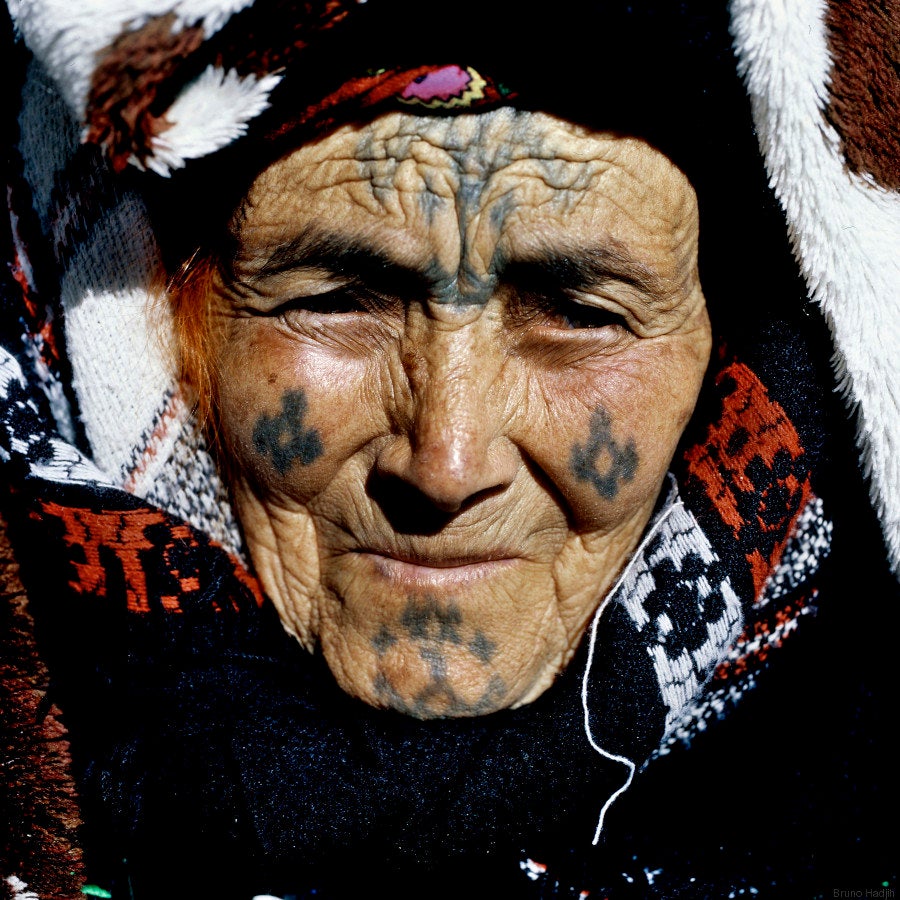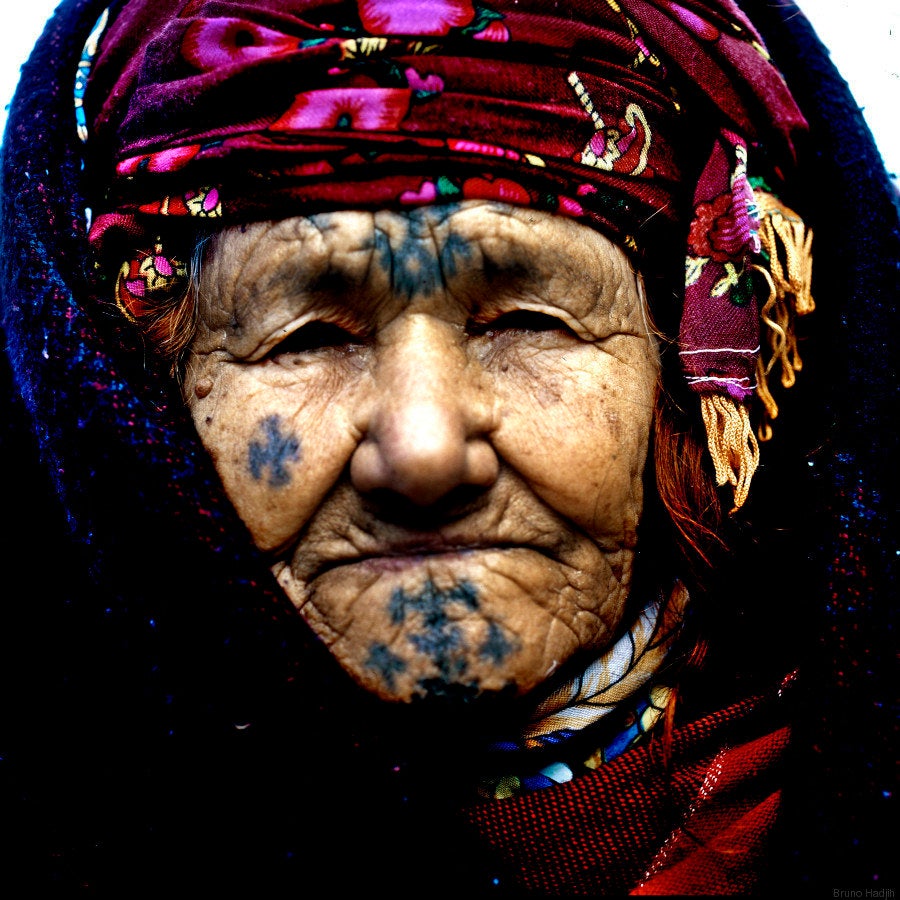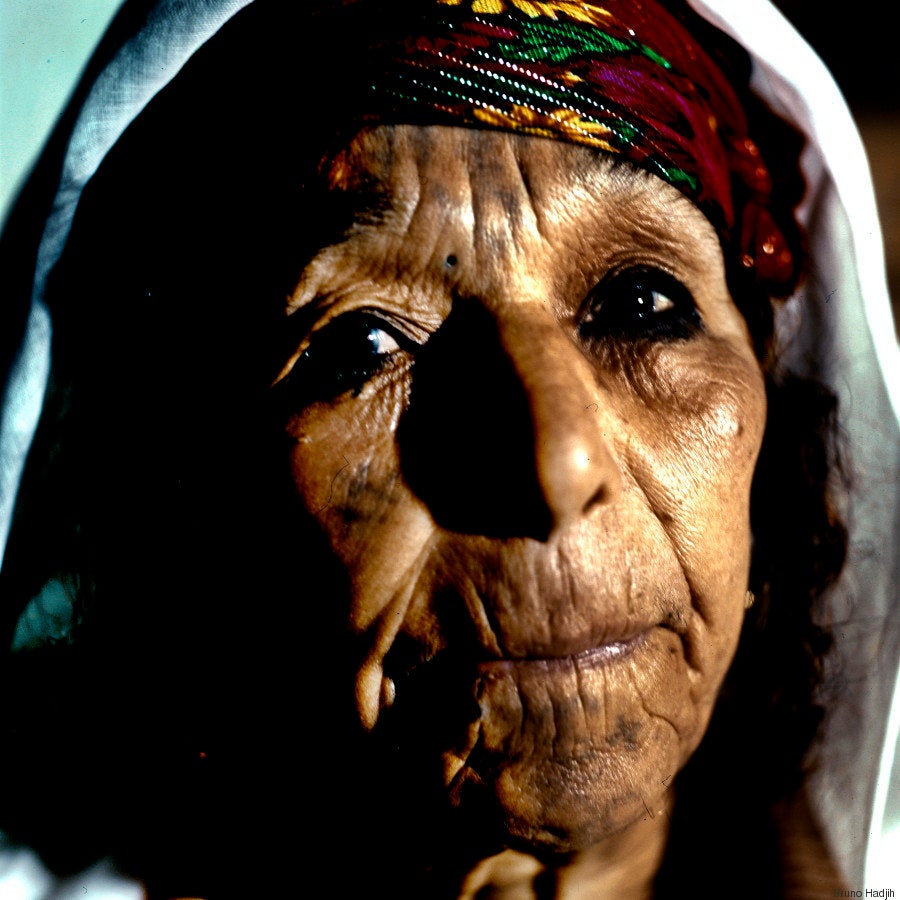In Algeria’s Aurès mountains, it was a tradition for Berber women to tattoo their bodies and faces. The shapes and symbols they used were both of cosmetic and therapeutic value, as the Berber community in eastern Algeria believed that tattoos could be used to heal illnesses and infertility.
The practice of tattooing, however, declined in the 1930s and 1940s, a development that has been attributed to the burgeoning influence of Islam in Algeria (which deems tattoos as haram, or forbidden).
As the practice continues to fade, grandchildren and great grandchildren will likely one day ask: What does this tattoo on my ancestor's forehead, cheek, or chin mean? A book by Lucienne Brousse, titled Feminine Beauty and Identity: Female Berber Tattoos of the Regions of Biskra and Touggourt, seeks to answer that question. The book was showcased at the Algiers International Book Fair, or Salon International du Livre d'Alger, which ran from Oct. 28 to Nov. 7, 2015.
Brousse compiled the book through a long process of reconstruction and interpretation of hundreds of drawings made by her friend Eliane Ocre, throughout Ocre's nursing career in Algeria.

"The symbol known as "The partridge's eye" is a small diamond, its edges rounded or bearing a small cross," writes Brousse in the chapter titled "Complex Symbols." "For the women who wear this symbol, it represents the bird itself, a symbol of beauty, agility ... and to represent this symbol on oneself, is to attract what it symbolizes."
Relying on Ocre's notes, research on tattoos and her knowledge of Kabyle people and culture, Brousse has compiled what she calls a "modest study, neither exhaustive, historic nor comparative."
Yet the work is an an invaluable reading manual on Berber tattoos and a formidable tool for decrypting their motifs. It even has accurate reproductions of the tattoos, thanks to the digitization of Ocre's drawings.
"The pictures showing the palm leaf, originating from the region of Touggourt, are particularly rich designs which, with some exceptions, aren't representative of anything," writes Brousse. “The palm leaf, just like the palm tree, represents, for some women, the (unspoken) status of "mother goddess," a source of wealth and a protective figure, like the protective shade of a palm tree."
Producing the book was "unexpected," Brousse explained to HuffPost Algeria, between meetings at the Diocesan Centre of the Glycines in Algiers. At 85, she still has exceptional vitality.
She said that before Ocre's death in 2004, her friend “wanted to destroy all the drawings she collected over the course of the years she spent as a nurse at the Touggourt, Biskra, Batna and Barika hospitals.”
After persuading her not to throw them away, Brousse inherited all these little pieces of paper.
"Once the drawings were sorted, I took all the testimonials of women that Eliane had put together -- she asked them about the meaning behind their tattoos, always with great delicacy and spontaneity,” she said.

"In the works consulted, as well as in the collection, the most frequent motif, always on the forehead, is called abernus, or bunting," writes Brousse in her book. "Their depictions, at times simple, at times complex, are, within the same geographic area, extremely diverse."
"My professional history has nothing to do with anthropology," Brousse said during the interview in Algiers. "I am a linguist and teacher by trade. I worked on Arabic and in Tamazight for my research, not with the aim of producing theoretical writing, but making a useful contribution to learning."
That's how over the course of her 60 years in Algeria, from 1953 to 2014, Brousse developed several methods for teaching these languages: Tamazight, Algerian Derja, Classical Arabic, and French. She also translated Antoine Saint Exupéry's The Little Prince into Derja.
Her book on female Berber tattoos doesn't stray from this passion for transmission of culture and pedagogy.

"This "cross" sign with equal length arms doesn't have a name in the corpus, nor in other sources we consulted," writes Brousse in the chapter dedicated to "Simple Signs." "It's a staple in all realms of decoration: on headstones, weavings, pottery, paintings, jewelry ... and tattoos, with no connection to any religious, and in particular, Christian, base."
Toward the end of the book, Brousse describes three kinds of symbol that only appear in Ocre's corpus, and that denote, she writes, "an astonishing freedom of creation."
A young woman from the region of Touggourt who had this design tattooed on her arm told Ocre during an interview that when she was younger, she never had the time to play because she had to work or take care of her younger siblings. As a mother, she hopes that her daughters will be able to go to school and enjoy playing children's games, like hopscotch. "Isn’t this an expression of frustration and its overcoming?” Brousse wondered.

“The dot is noted in the corpus in the plural form, "nuqat or nugat," writes Brousse. “A simple element, it can be depicted alone, and some take it to mean home, "ddar," that is to say, stability and security. You find it on the cheek, the forehead, the arms, just about everywhere, and it's often called ‘bull's-eye.’"
Heiress of Eliane Ocre's stories, Lucienne Brousse preserves part of the memory of Algeria's culture and heritage.
Thanks to Bruno Hadjih who graciously offered these photographs from his series "Fantasy of the Kahina," (2005-2010) taken in the Aurès.
This story originally appeared on HuffPost Algeria. It has been translated into English and edited for clarity.